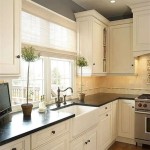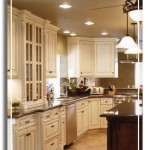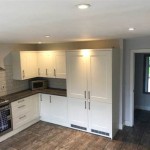Kitchen Cabinet Moldings Suppliers in Europe: A Comprehensive Overview
The European market for kitchen cabinet moldings is a dynamic sector driven by both new construction and renovation activities. Supplying this market requires a deep understanding of regional variations in design preferences, material compliance regulations, and logistical considerations. Kitchen cabinet moldings, while often considered finishing touches, significantly impact the overall aesthetic and perceived quality of a kitchen space. This article will delve into the key suppliers operating within Europe, the materials commonly utilized, regulatory standards, and design trends influencing the industry.
The supply chain for kitchen cabinet moldings in Europe is complex. It involves raw material providers, manufacturers, distributors, and retailers. Some companies operate vertically, controlling multiple stages of the process, while others specialize in a specific niche. This specialization can range from focusing on a particular material, such as solid wood or MDF, to catering to a specific segment of the market, like high-end bespoke kitchens or mass-produced modular units.
The European context presents unique challenges and opportunities. The diversity of cultures and design preferences across the continent necessitates a nuanced approach. What is popular in Scandinavia may not resonate in Southern Europe. Furthermore, environmental concerns and stringent regulations regarding volatile organic compounds (VOCs) and sustainable sourcing play a crucial role in shaping the market.
Key Suppliers and Market Dynamics
Identifying the key players in the European kitchen cabinet molding supply chain is essential for understanding market dynamics. These suppliers range from large multinational corporations to smaller, specialized regional firms. Some prominent companies focus on supplying the materials used in molding production, while others are involved in the actual manufacturing and distribution of finished moldings.
Several large European companies are involved in the production of wood-based panels, such as MDF and particleboard, which are commonly used as substrates for kitchen cabinet moldings. These companies often have extensive distribution networks across Europe, facilitating the availability of their products to molding manufacturers.
In addition to material suppliers, there are numerous companies specializing in the production of finished moldings. These companies may source their raw materials from various suppliers and utilize different manufacturing techniques, such as extrusion, wrapping, and laminating, to create a wide range of molding profiles and finishes. Some of these manufacturers cater specifically to the kitchen cabinet industry, while others serve a broader range of applications within the construction and interior design sectors.
The competitive landscape is also influenced by distributors who act as intermediaries between manufacturers and retailers or kitchen installers. These distributors often carry a wide range of molding products from different manufacturers, providing customers with a convenient one-stop-shop for their needs. The proliferation of online retailers also adds another layer of complexity to the market, providing consumers with access to a wider selection of products and competitive pricing.
Market dynamics are further shaped by economic conditions, housing market trends, and consumer spending habits. During periods of economic growth, demand for kitchen renovations and new construction tends to increase, driving demand for kitchen cabinet moldings. Conversely, during economic downturns, demand may decline as consumers postpone discretionary spending on home improvement projects.
Materials and Manufacturing Processes
The selection of materials for kitchen cabinet moldings is influenced by factors such as cost, durability, aesthetic appeal, and environmental considerations. Solid wood, MDF (Medium-Density Fiberboard), particleboard, and PVC (Polyvinyl Chloride) are among the most commonly used materials in the European market.
Solid wood offers a classic and premium aesthetic, known for its natural beauty and durability. Hardwoods, such as oak, maple, and cherry, are often preferred for high-end kitchen cabinets, while softwoods, such as pine and fir, may be used for more budget-friendly options. However, solid wood can be more expensive than other materials and may be susceptible to moisture damage and warping if not properly sealed and maintained.
MDF is a manufactured wood product made from wood fibers bonded together with resin under high pressure and heat. It is a versatile material that offers a smooth surface, making it ideal for painting or laminating. MDF is also more dimensionally stable than solid wood, meaning it is less likely to warp or crack. It is a popular choice for kitchen cabinet moldings due to its affordability and consistent quality.
Particleboard, another manufactured wood product, is made from wood chips bonded together with resin. While less dense and less stable than MDF, particleboard is a more cost-effective option, often used for less visible components of kitchen cabinets. It is typically laminated or veneered to improve its appearance and durability.
PVC is a synthetic plastic material that offers excellent resistance to moisture and chemicals. It is often used for kitchen cabinet moldings in areas prone to water exposure, such as around sinks and dishwashers. PVC moldings are also easy to clean and maintain, making them a practical choice for busy kitchens. However, PVC is not as aesthetically pleasing as solid wood or MDF and may not be suitable for all design styles.
The manufacturing processes used to create kitchen cabinet moldings vary depending on the material and desired profile. Extrusion is commonly used for PVC moldings, where the material is forced through a die to create a specific shape. Wrapping involves applying a decorative paper or vinyl veneer to a substrate, such as MDF or particleboard. Laminating involves bonding multiple layers of material together, such as a decorative laminate over a core of MDF or particleboard.
Regulations, Standards, and Design Trends
The European market for kitchen cabinet moldings is subject to various regulations and standards aimed at protecting human health and the environment. These regulations cover aspects such as VOC emissions, formaldehyde content, and sustainable sourcing of wood products.
The European Union's REACH (Registration, Evaluation, Authorisation and Restriction of Chemicals) regulation restricts the use of certain chemicals in manufacturing processes and products. This regulation affects the types of adhesives and coatings that can be used in the production of kitchen cabinet moldings. Manufacturers must comply with REACH requirements to ensure that their products are safe for consumers and the environment.
The European standard EN 717-1 specifies the formaldehyde content of wood-based panels. Formaldehyde is a known carcinogen, and regulations limit the amount that can be released from wood products. Kitchen cabinet moldings made from MDF or particleboard must meet the requirements of EN 717-1 to ensure that they do not pose a health risk to consumers.
Sustainable sourcing of wood products is another important consideration in the European market. The Forest Stewardship Council (FSC) and the Programme for the Endorsement of Forest Certification (PEFC) are two prominent organizations that certify wood products as being sourced from responsibly managed forests. Consumers are increasingly demanding products made from sustainably sourced materials, and manufacturers are responding by offering FSC- or PEFC-certified kitchen cabinet moldings.
Design trends also play a significant role in shaping the market for kitchen cabinet moldings. Minimalist designs, characterized by clean lines and simple profiles, are gaining popularity. These designs often feature flat-panel cabinet doors with minimal or no applied moldings. In contrast, traditional designs, with more ornate moldings and decorative details, remain popular in some regions and market segments.
The use of color and texture is also influencing design trends. Gray and white cabinet colors are perennially popular, while bolder colors, such as navy blue and emerald green, are gaining traction. Textured surfaces, such as wood grain and matte finishes, add visual interest and depth to kitchen cabinets. The demand for integrated lighting solutions is also increasing, with LED strips often incorporated into kitchen cabinet moldings to provide task lighting and ambient illumination.
The integration of smart home technology is also starting to influence kitchen design. Kitchen cabinets with integrated lighting controls, touchless opening mechanisms, and built-in charging stations are becoming increasingly popular. This trend is likely to continue as smart home technology becomes more affordable and accessible.
The European market for kitchen cabinet moldings is a complex and dynamic sector. Suppliers must navigate a diverse range of regional preferences, regulatory requirements, and design trends to succeed. By understanding the key dynamics of the market, suppliers can effectively cater to the evolving needs of European consumers and kitchen manufacturers.

European Kitchen Cabinets Rta Style

European Kitchen Cabinets Rta Style

European Kitchen Cabinets Rta Style

Top 20 European Kitchen Cabinet Makers Oppein

European Kitchen Cabinets Rta Style

Baineng European Style Kitchen Cabinets Whole Cabinet Manufacturer Euro

European Kitchen Cabinets Rta Style

European Kitchen Cabinets Rta Style

Oppolia Custom Kitchen Cabinet Maker

White Membrane Kitchen Cabinet Suppliers And Manufacturers China Factory Rebon
Related Posts








